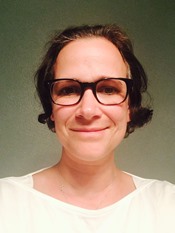Program Information
The Effect of Table Height On CTDIvol and SSDE in CT Scanning: A Phantom Study
R Marsh*, M Silosky , University of Colorado School of Medicine, Aurora, CO
Presentations
SU-G-206-11 (Sunday, July 31, 2016) 4:00 PM - 6:00 PM Room: 206
Purpose:
Localizer projection radiographs acquired prior to CT scans are used to estimate patient size, affecting the function of Automatic Tube Current Modulation (ATCM) and calculation of the Size Specific Dose Estimate (SSDE). Due to geometric effects, the projected patient size varies with scanner table height and with the orientation of the localizer (AP versus PA). Consequently, variations in scanner table height may affect both CTDIvol and the calculated size-corrected dose index (SSDE). This study sought to characterize these effects.
Methods:
An anthropomorphic phantom was imaged using an AP localizer, followed by a diagnostic scan using ATCM and our institution’s routine abdomen protocol. This was repeated at various scanner table heights, recording the scanner-reported CTDIvol for each diagnostic scan. The width of the phantom was measured from the localizer and diagnostic images using in-house software. The measured phantom width and scanner-reported CTDIvol were used to calculate SSDE. This was repeated using PA localizers followed by diagnostic scans.
Results:
1) The localizer-based phantom width varied by up to 54% of the nominal phantom width between minimum and maximum table heights.
2) Changing the table height caused a variation in scanner-reported CTDIvol of a factor greater than 4.6 when using a PA localizer and almost 2 when using an AP localizer.
3) SSDE, calculated from measured phantom size and scanner-reported CTDIvol, varied by a factor of more than 2.8 when using a PA localizer and almost 1.5 when using an AP localizer.
Conclusion:
Our study demonstrates that off-center patient positioning affects the efficacy of ATCM, more severely when localizers are acquired in the PA rather than AP projection. Further, patient positioning errors can cause a large variation in the calculated SSDE. This hinders interpretation of SSDE for individual patients and aggregate SSDE data when evaluating CT protocols and clinical practices.
Contact Email:

